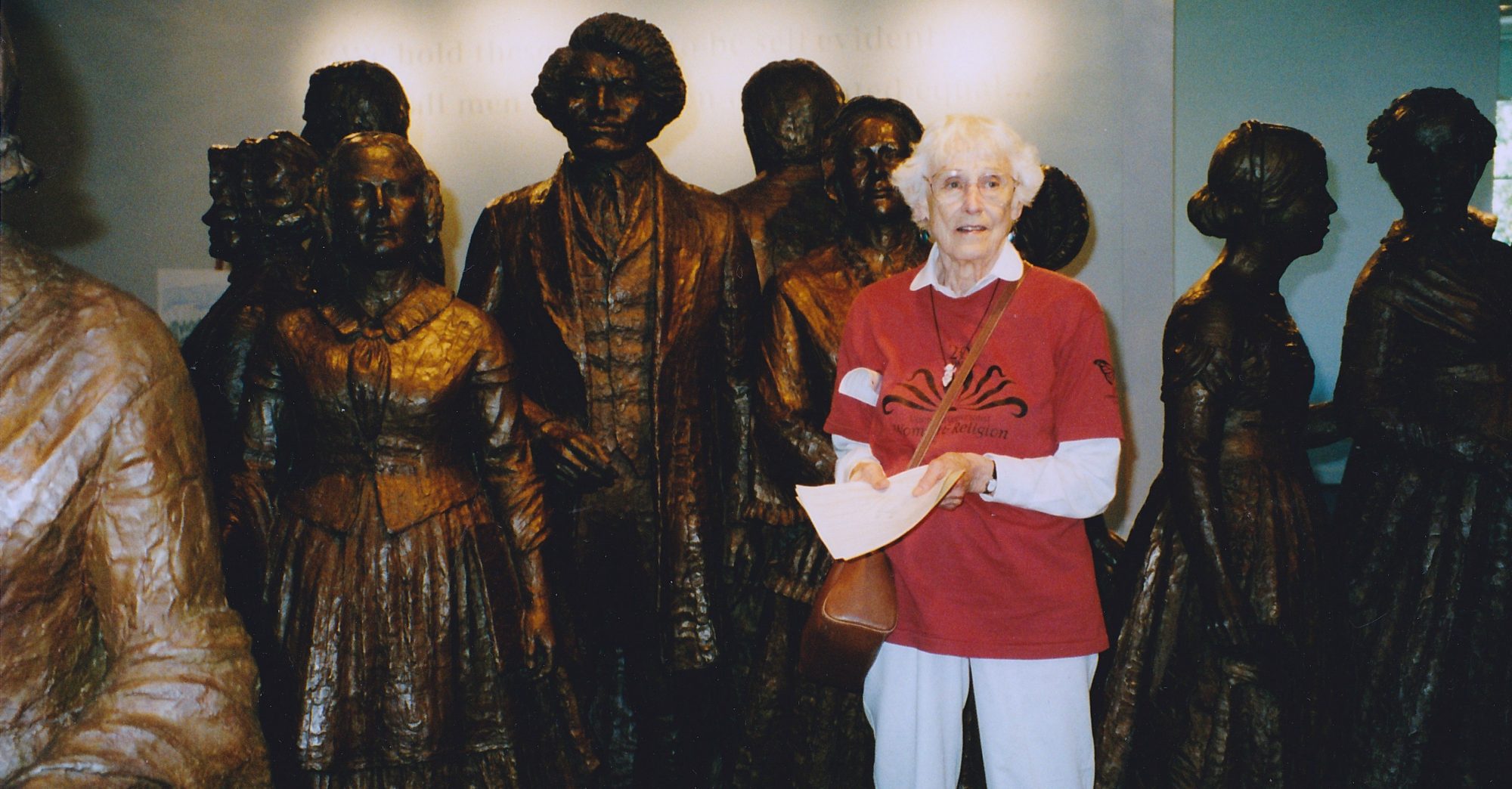From: The Women and Religion Resolution: The First Decade on the UU Principles Adoption
In retrospect the feat appears more probable for in 1977 women were not yet fully on the map of male consciousness. Few, is any of those in charge, questioned that an innocent sounding resolution titled Women and Religion could, like the Trojan Horse, have anything of consequence inside.
Once we began examining from a feminist perspective the male bias so prevalent in the scriptures in the Judeo-Christian tradition another more immediate question arose, “Are the basic values in the religious tenets of the UUA similarly biased?”
Those tenets of beliet then called “purposes and objectives” and now referred to as “Principles” had been debated, struggled over and contested for 65 hours by those men, primarily ministers, who had gathered in Syracuse in 1959 for final merger negotiations between the Unitarians and the Universalists.
Aworkshop at the Women and Religion Conference in Grailville, Ohio, in 1919 set out to explore whether the UUA Principles established 20 years earlier by men affirmed women as they affirmed men. The participants came through with a resounding, “NO!” “Nor,” said those present, “do they indicate a respect for the totality of life and for the earth, which we deem important.”
Opening the UUA Principles for review and revision began that night! It was the Women and Religion Resolution and its implementation that provided the original impetus for opening the Principles for analysis and revision.
It was lay women who continued the dialogue and who presented a draft form of revised Principles to their districts. In 1981, two separate drafts of the principles were submitted by districts and appeared on the General Assembly Agenda. High Drama ensued. That is a long story in itself. By 1985 a new statement of Principles had been approved two years in a row by General Assemblies as required in the bylaws. There was mild celebration,
apparently more because the task was completed than because of the content–the basic values—the denomination had endorsed.
As we summarize action taken by the UUA to implement the Women and Religion Resolution we must carefully examine the New Principles from a feminist perspective. Because of the New Principles
We are at a NEW BEGINNING
We labor in new fields–in a new paradigm–a NEW REALITY CONSTRUCT
We must lift up and celebrate the fact that a phenomenal change in practice and in ideology has been embraced by the Unitarian Universalist Association.
In practice: Women, half of humanity, have historically been excluded from shaping religious traditions. The UUA Bylaws Revision Committee that recommended the major portion of the final version of the current Principles was composed of four women and three men with one of the men chairing the committee.
This in contrast to the all male membership of the committee at merger. In ideology it is particularly significant that our new Principles no longer endorse only a world view based on hierarchical relationships with the male dominion over all.
No longer do we as women compromise ourselves–participate in our own diminishment–when we say we are UUA members. Gone is the statement that we “cherish and spread the universal truths taught by the great prophets and teachers in every age and tradition…..” It was many of those very prophets and teachers who mouthed those atrdcious statements about our nature and our destiny that women have been attempting to exorcise for years–such as:
Tertullian (A.D. 220) “Woman is a temple built over a sewer, the gateway to the devil. Woman, you are the devil’s doorway. You should always go in mourning and in rags.”
Luther (1483-1546) “If a woman grows weary and, at last, dies of childbearing, it matters not. [,et her die from bearing; she is there to do it.”
Instead of hierarchy being the underlying assumption of our world view and male dominance assumed, the current principles embrace a sense of connectedness and respect for the totality of life that women named at that first discussion in Grailville. The final Principle reads:
We covenant to affirm and promote “respect for the interdependent web of all existence of which we are a part.”
That statement, “RESPECT FOR THE INTERDEPENDENT WEB OF ALL EXISTENCE OF WHICH WE ARE A PART” represents a shift in perspective of global proportions. A world view based on respect for all of existence is life-giving. A world view based on dominion over all has led us into exploitation of the earth and its resources for the benefit, supposedly, of man–a view that has us on the brink of a man-made Armageddon.
We celebrate the turn to a new consciousness. The first seeds of a reality based on nurturance and caring have been planted. We must not let them go unattended.
As we celebrate the Unitarian Universalist Decade with the Women and Religion Resolution we must not relax as though our tasks were completed. We have barely begun. We must continually be aware of the sexism in the epoch that is dyrng and also contribute every ounce of enerry available and every insight from our feminist consciousness to the new day that is being born.
